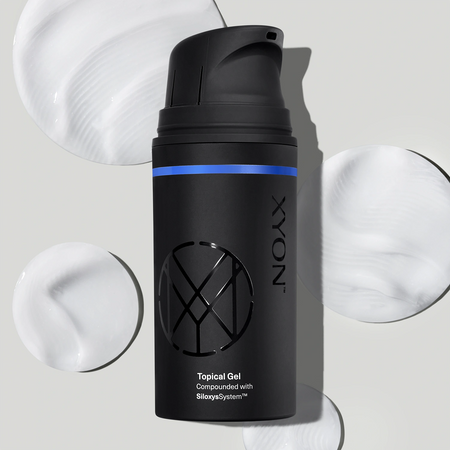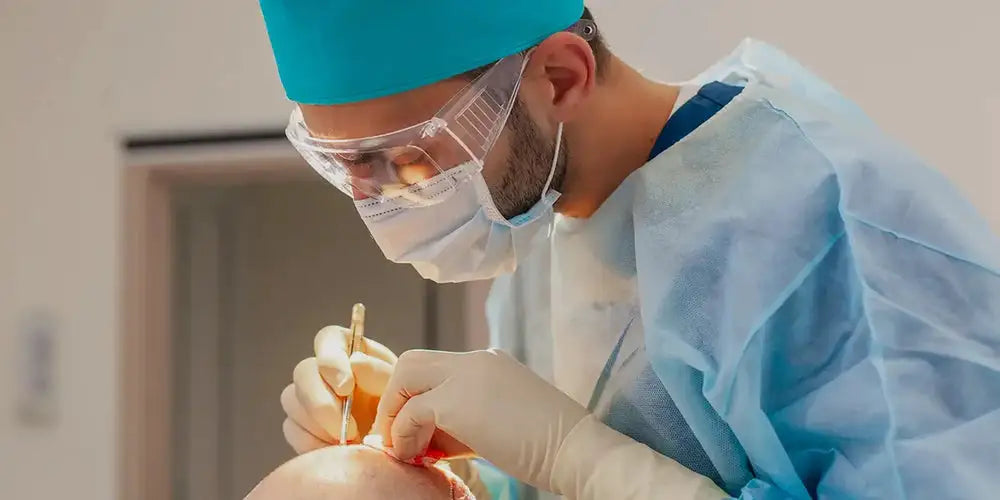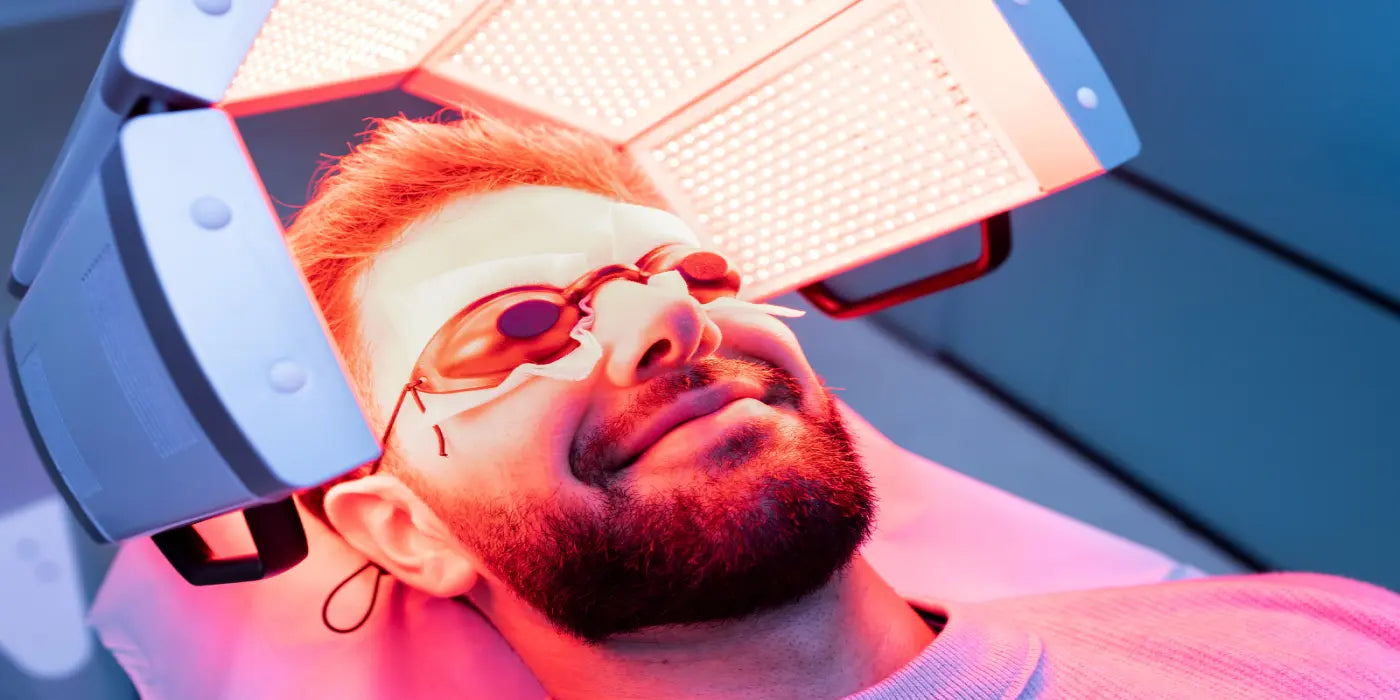For some hair loss patients, the best option to treat their hair loss is a surgical hair transplant. You may be wondering whether you still need to take finasteride after a hair transplant. In this article, we’ll review the reasons for starting or continuing to take finasteride after a hair transplant and how it can affect the success of your hair restoration procedure.
Source: Adam Hurly from Blueprint Grooming | blue-print.co explains why it's important to use finasteride before and after your hair transplant
Finasteride after hair transplant: Do I have to take it?
Every patient is evaluated on a case-by-case basis, but many hair transplant surgeons do recommend taking finasteride after a hair transplant. This is because finasteride can help maintain and regrow hair. In a clinical study comparing finasteride to placebo in men who had received hair transplants for male pattern hair loss, those who were given the active drug saw greater improvements in hair density in surgical and surrounding areas (Leavitt et al., 2005).
The reasons for this come down to genetics. Hair follicles located in certain parts of the scalp are more prone to the effects of the hormone dihydrotestosterone (DHT). These hair follicles are usually concentrated along the hairline and the top of the head (i.e. the crown), which are also areas where thinning is most apparent. Hairs located in other areas of the scalp, such as the occipital region, are less susceptible to DHT and therefore more resistant to its effects (Urysiak-Czubatka et al., 2014). This is why hairs from this region are selected for hair transplants.
Greater resistance to the effects of DHT does not necessarily make these hairs immune to hormonal hair loss. It may simply occur at a much slower rate. Taking finasteride after a hair transplant can help ensure that transplanted hair follicles continue to produce healthy hairs, for as long as possible and importantly, prevent further progression of hair loss in untreated areas.
XYON's finasteride solutions that are easy to use and effective. Connect with an expert to learn about your options.


Using finasteride after a hair transplant is important for maximizing your results.
What are the pros and cons of taking finasteride after a hair transplant?
Since taking finasteride after a hair transplant isn’t an absolute necessity, let’s explore the potential pros and cons.
The first factor to consider is how severe the pattern balding was prior to the transplant. For those with mild disease prior to transplant, finasteride may help to prevent pattern balding from progressing and reoccurring after the transplant, resulting in further hair loss. In this way, finasteride can be effective at prolonging the hair growth results from the transplant and reducing the risk of needing another procedure in the future.
Although the research is slightly limited, some experts also believe that finasteride can enhance hair growth results following transplant. For example, one study observed a group of men using finasteride for 4 weeks prior to, and 48 weeks following transplant and they compared the hair growth results to a group receiving a placebo drug. It was found that 94% of the finasteride group had visible improvement in hair growth around the hairline, compared to only 67% of the placebo group (Leavitt et al, 2005). This demonstrated that finasteride may encourage better hair growth following a transplant, though further research is needed to confirm this.
It’s also believed that finasteride may help to reduce the initial shedding that many people experience shortly after the procedure. It’s common for the hair, which is implanted during a hair transplant, to shed around 2-12 weeks after the surgery. Whilst this is a normal reaction for many, it can be upsetting to feel like you’re losing progress after the procedure, so taking medication to help mitigate this may be a good option for many people.
When it comes to the potential downsides of taking finasteride after a hair transplant, the risk of side effects tends to be the primary concern. These may include sexual side effects, such as erectile dysfunction and decreased libido and this can occur when the finasteride influences the systemic levels of DHT through the blood stream. Using topical finasteride can help to reduce your risk of experiencing side effects since it delivers the medication directly to the hair follicles and therefore limits the amount of active ingredient entering the bloodstream.
XYON’s topical finasteride uses a special patented technology called SiloxysSystem Gel™, which has been designed to deliver the medication to the hair follicles in a slow and controlled manner, whilst limiting the amount of active ingredient entering the blood stream. If you’re someone who is concerned about side effects, you can start a free consultation with XYON and speak to one of our hair loss specialists; they can guide you through your options and help you make the right decision when it comes to your hair.
How long do you have to take finasteride after a hair transplant?
You may need to take finasteride indefinitely following a hair transplant to maintain your results. Of course, this would depend on your tolerance to the medication and the absence of any adverse effects in the short and long-term. We recommend that you consult with your hair transplant surgeon to understand what your treatment duration may need to be.
You could be prescribed either an oral or topical form of finasteride. Your hair transplant surgeon will determine which of these options would be ideal for you. If you’re prescribed topical finasteride, they’ll provide advice on how and where to apply your treatment and when to start application in order to allow the surgical area time to heal.
When can I start finasteride after a hair transplant?
This will be determined by your hair transplant surgeon. Some doctors may recommend using finasteride immediately after the procedure, whilst others may advise waiting a couple of weeks to allow healing time. Ultimately, you should follow the advice of your specialist.
How much does topical finasteride cost?
The price of finasteride for hair loss treatment will vary depending on which provider you decide to go for. Typically, formulations which have been developed to minimize side effects tend to be a little more expensive than simpler alternatives.
Hair transplants can be a significant investment, which is why many people continue using finasteride long-term to maximize the longevity of their results. Whilst finasteride may be an ongoing expense, it can likely help to maintain hair growth and prevent further hair loss over time.
Can I have a hair transplant without finasteride?
The answer to this depends on your hair transplant surgeon and their assessment of your case of hair loss. For the reasons identified above, you may not see the best results if you choose not to take finasteride after your procedure. Following your transplant, you could see a dramatic cosmetic improvement as a result of hair growth in the areas the procedure has targeted. But a major concern may be whether pre-existing hair in or around the transplanted areas can be sustained without the use of finasteride.
If you undergo a hair transplant without taking finasteride, it’s possible that hairs in non-transplanted areas will continue to thin over time. This can lead to an undesirable cosmetic result where hairs in the surgical area may be much denser than surrounding areas.
Is minoxidil or finasteride better after a transplant?
Minoxidil is another form of hair loss medication which works in a different way to finasteride. Unlike finasteride, minoxidil has no impact on DHT levels. Instead, it works by enhancing blood flow to the hair follicles, as well as encouraging hair follicles to enter the active growth stage of the hair growth cycle (known as the anagen phase).
Both minoxidil and finasteride are viable options for maintaining hair growth following a transplant and some experts may even recommend using them together. A combination of the two treatments together can enhance protection against future hair loss, addressing both the hormonal component of pattern balding and acting on the hair follicles and growth cycle directly.
XYON’s topical finasteride and minoxidil provides a convenient combination treatment option. It’s important to consult a hair loss specialist before you start treatment following a transplant; you can easily connect with one of our physicians to get personalized advice.
Finasteride after hair transplant: Takeaway
Hair transplants can produce dramatic results in patients experiencing androgenetic alopecia. But to make the most of these procedures, it may be necessary to take finasteride. The main benefits of finasteride use after a transplant are the maintenance of hair growth in areas around treated regions of the scalp and support of new growth in transplanted follicles. If your hair loss treatment plan includes a hair transplant, be sure to talk to your surgeon about the need to use finasteride.
References
Leavitt, M., Perez-Meza, D., Rao, A.N., Barusco, M., Kaufman, K.D., Ziering, C. (2005). Effects of finasteride (1mg) on hair transplant. Dermatologic Surgery, 31(10), 1268-76. 10.1111/j.1524-4725.2005.31202




